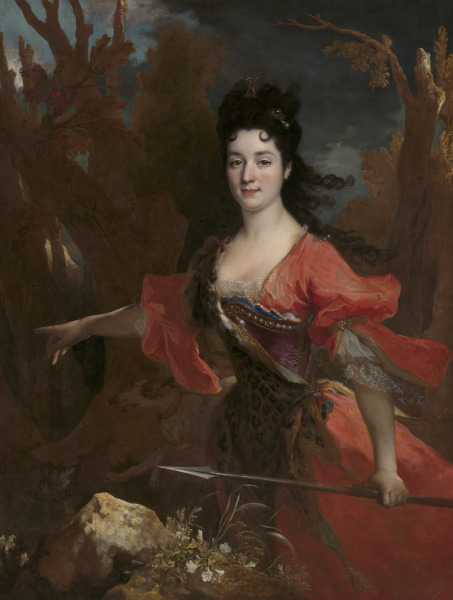
Portrait of Jeanne-Marie de Sacconin de Pravieux, Wife of Francois Dulieu, Seigneur de Chénevoux, as Diana (Primary Title)
Nicholas de Largillière, French, 1656 - 1746 (Artist)
Aristocratic women demonstrated a decided preference for being
depicted in the guise of the Roman goddess Diana in the imaginative
portraiture of the 17th century. By this time, synthesizing a sitter’s
likeness with mythological or other literary personages from history
painting had become a highly lucrative conceit for artists, and these
portraits often revealed much about their patrons’ values and ideals.
Whereas portraiture in previous eras tended to adapt women’s features
to predetermined ideals of beauty or to emphasize their suitability as
wives and mothers, the iconography of the virgin goddess of the
woodland hunt appears to have emancipated women from patriarchal
standards of beauty and virtue. In various tales, Diana was known to
punish men who attempted to rival her or threaten her chastity to any
degree. To transform this young lady into a self-possessed goddess,
Largillière had her pose brandishing a spear, with an imperative gesture
that appropriates the commanding authority of princes and military
commanders in the forefront of battle scenes. The magnitude of her
charisma undoubtedly reflects the evolution of women affirming their
own standards for artistic expression in France, which began with the
preciosité movement.
The Jordan and Thomas A. Saunders III Collection
Some object records are not complete and do not reflect VMFA's full and current knowledge. VMFA makes routine updates as records are reviewed and enhanced.

